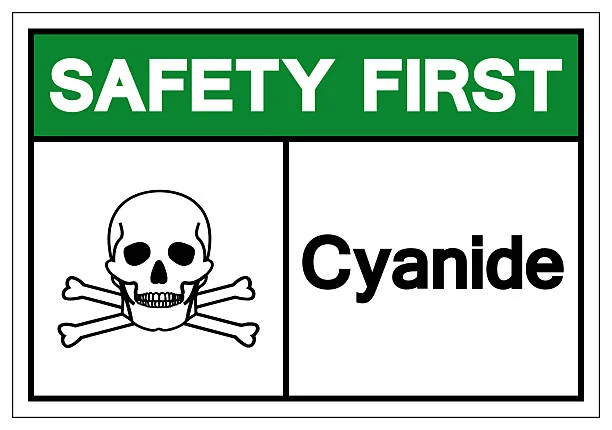
Introduction
Sodium cyanide (NaCN) is a chemical compound that plays a significant role in both the metallurgy and chemical industries. Despite its highly toxic nature, its unique chemical properties make it indispensable in several industrial processes. This article delves into the various applications of Sodium cyanide within these two crucial industrial sectors.
Properties of Sodium Cyanide
Sodium cyanide is a white crystalline solid with a faint, bitter almond odor. It has a molar mass of approximately 49.01 g/mol. It is highly soluble in water, with about 46 grams dissolving in 100 milliliters of water at room temperature. The compound consists of a Na⁺ cation and a CN⁻ anion. It has a melting point of around 564 °C and a boiling point of approximately 1496 °C. These physical and chemical properties are fundamental to understanding its applications in different industrial scenarios.
Applications in Metallurgy
Gold and Silver Extraction
One of the most well - known applications of Sodium Cyanide in metallurgy is in the extraction of gold and silver from their ores. This process, known as Cyanidation, is based on the ability of cyanide ions to form stable complexes with gold and silver. In the presence of oxygen and water, sodium cyanide reacts with gold in the ore as follows:
4Au + 8NaCN + O₂+ 2H₂O → 4Na[Au(CN)₂]+ 4NaOH
The gold - cyanide complex [Au(CN)₂]⁻ is soluble in water, allowing the gold to be separated from the ore matrix. This solution is then further processed to recover the pure gold. Similarly, silver can be extracted using a similar reaction mechanism. Cyanidation is a widely used method in the mining industry due to its high efficiency in recovering precious metals from low - grade ores. However, strict safety and environmental protocols must be followed during this process to prevent the release of toxic cyanide compounds.
Metal Plating
Sodium cyanide is also used in electroplating processes. In electroplating, a thin layer of a metal is deposited onto the surface of another material. Cyanide - based electroplating baths are used for plating metals such as copper, silver, cadmium, and zinc. The cyanide ions in the bath serve several functions. They help in the dissolution of the anode metal, ensuring a steady supply of metal ions for deposition. Cyanide also acts as a complexing agent, which can improve the quality of the deposited metal layer. It can reduce the grain size of the deposit, resulting in a smoother and more uniform coating. For example, in silver plating, sodium cyanide in the plating bath helps in achieving a bright, adherent silver coating on the substrate.
Case Hardening of Steel
In the case hardening of steel, sodium cyanide is used to increase the surface hardness of steel objects. The process involves heating the steel in the presence of a cyanide - containing compound. The cyanide decomposes at high temperatures, releasing carbon and nitrogen atoms. These atoms diffuse into the surface of the steel, forming hard compounds such as iron carbides and nitrides. This results in a hard outer layer on the steel, while the core remains relatively soft and ductile. The use of sodium cyanide in case hardening can enhance the wear resistance and fatigue strength of steel components, making them suitable for applications such as gears, shafts, and bearings.
Applications in the Chemical Industry
Synthesis of Organic Compounds
Sodium cyanide is a crucial starting material for the synthesis of a wide range of organic compounds. It is used in the production of pharmaceuticals, plastics, dyes, and other chemicals. For example, in the pharmaceutical industry, it is used in the synthesis of drugs such as penicillin, vitamin B₆, and folic acid. In the synthesis of penicillin, sodium cyanide is involved in a series of reactions that lead to the formation of the characteristic β - lactam ring structure of the antibiotic.
In the production of plastics, sodium cyanide can be used to synthesize monomers. For instance, it is used in the production of acrylonitrile, which is a monomer for making polyacrylonitrile (PAN), a common polymer used in the production of synthetic fibers and plastics. The reaction of sodium cyanide with other chemicals can also lead to the formation of various organic intermediates that are further processed to obtain the desired end - products.
Production of Inorganic Cyanides
Sodium cyanide is used as a starting material for the production of other important inorganic cyanides. For example, it is used to produce Potassium cyanide (KCN), zinc cyanide (Zn(CN)₂), and copper cyanide (CuCN). These inorganic Cyanides have their own applications in various industries. Potassium cyanide is used in electroplating, especially in the plating of gold and silver. Zinc cyanide is used in the zinc - plating process, and copper cyanide is used in copper electroplating and in the production of certain copper - based alloys. The production of these inorganic cyanides typically involves reacting sodium cyanide with the appropriate metal salts or through other chemical reactions.
Use in Chemical Analysis
In chemical analysis, sodium cyanide can be used in certain analytical techniques. For example, in the determination of certain metal ions in solution, cyanide can be used as a complexing agent. By adding sodium cyanide to a solution containing metal ions, specific metal - cyanide complexes can be formed. These complexes often have characteristic properties, such as color or solubility, which can be used to identify or quantify the metal ions. However, due to the extreme toxicity of sodium cyanide, its use in chemical analysis is highly regulated, and alternative, less toxic methods are often preferred when available.
Safety Considerations
It is important to note that sodium cyanide is extremely toxic. Exposure to sodium cyanide, whether through inhalation, ingestion, or skin contact, can be fatal. It works by interfering with cellular respiration, preventing cells from using oxygen effectively. In the industrial use of sodium cyanide, strict safety measures must be implemented. Workers handling sodium cyanide must wear appropriate personal protective equipment, including gloves, goggles, and respiratory protection. Storage facilities for sodium cyanide should be designed to prevent leaks and spills, and emergency response plans must be in place in case of accidental releases. Environmental protection is also a major concern, as any release of sodium cyanide into the environment can have severe consequences for wildlife and water sources.
Conclusion
Sodium cyanide, despite its inherent toxicity, has diverse and important applications in both the metallurgy and chemical industries. In metallurgy, it is essential for precious metal extraction, metal plating, and case hardening. In the chemical industry, it serves as a key starting material for the synthesis of numerous organic and inorganic compounds and has applications in chemical analysis. However, the use of sodium cyanide must always be accompanied by strict safety and environmental protection measures to minimize the risks associated with this highly toxic compound. As technology advances, efforts are continuously being made to develop alternative methods that can achieve the same industrial goals without the use of such a hazardous chemical, but for now, sodium cyanide remains a vital component in many industrial processes.
- Random Content
- Hot content
- Hot review content
- butyl vinyl ether
- Pharmaceutical Intermediate Glycine with High Quality 99%
- 99.5% Pure Ethylene Glycol Mono Ethylene Glycol MEG EG
- Industrial Sodium Nitrite 98.5%
- Ethylene carbonate
- Dimethyl Carbonate (DMC)
- Do flotation reagents have environmental impacts?
- 1Discounted Sodium Cyanide (CAS: 143-33-9) for Mining - High Quality & Competitive Pricing
- 2China's New Regulations on Sodium Cyanide Exports and Guidance for International Buyers
- 3Sodium Cyanide 98% CAS 143-33-9 gold dressing agent Essential for Mining and Chemical Industries
- 4International Cyanide(Sodium cyanide) Management Code - Gold Mine Acceptance Standards
- 5China factory Sulfuric Acid 98%
- 6Anhydrous Oxalic acid 99.6% Industrial Grade
- 7Oxalic acid for mining 99.6%
- 1Sodium Cyanide 98% CAS 143-33-9 gold dressing agent Essential for Mining and Chemical Industries
- 2High Quality 99% Purity of Cyanuric chloride ISO 9001:2005 REACH Verified Producer
- 3Zinc chloride ZnCl2 for High Molecular Weight Polymers Initiator
- 4High Purity · Stable Performance · Higher Recovery — sodium cyanide for modern gold leaching
- 5High Quality Sodium Ferrocyanide / Sodium Hexacyanoferr
- 6Gold Ore Dressing Agent Safe Gold Extracting Agent Replace Sodium Cyanide
- 7Sodium Cyanide 98%+ CAS 143-33-9











Online message consultation
Add comment: